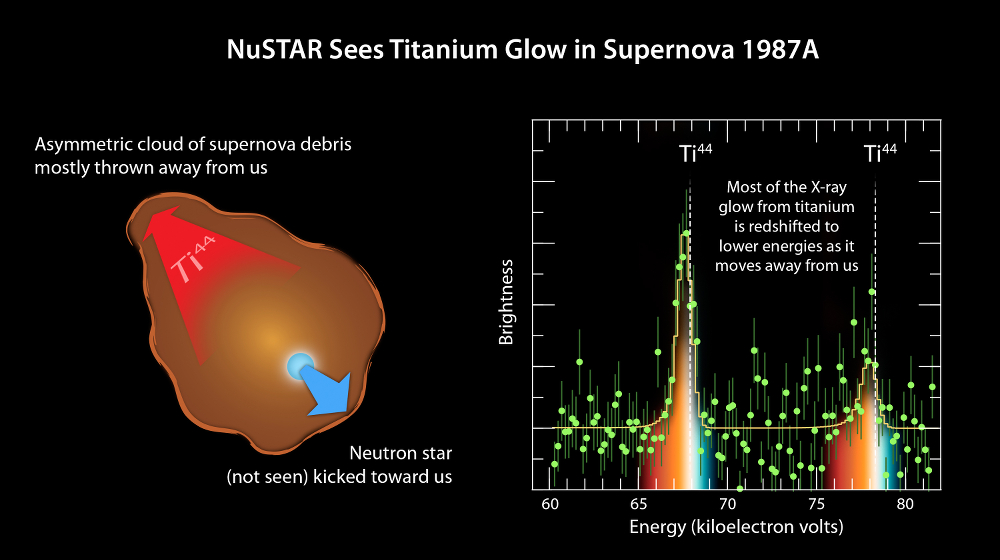
 Credit: NASA/JPL-Caltech/UC Berkeley
Credit: NASA/JPL-Caltech/UC Berkeley
An Asymmetric Supernova
Massive stars contain powerful thermonuclear generators in their cores. These generators are powered by the conversion of mass to energy through the fusion of simple atomic nuclei into more complex ones. Hydrogen is first fused into helium nuclei; three helium nuclei form a carbon nucleus; carbon and helium produce oxygen nuclei; and so on, until a substantial inner core of iron is created. No energy can be extracted from this iron core, so the formation of the iron core marks the end of the star: the core instantly collapses, and the outer layers of the star are blasted into space by the enormous energy released in this supernova explosion. Now, sensitive measurements with NASA's NuSTAR hard X-ray observatory are providing new insights into the details of how this explosion happens. The image above shows an X-ray spectrum of SN 1987a, a supernova explosion which was observed on February 23, 1987. The peaks in the NuSTAR X-ray spectrum shown above are produced by atoms of titanium, which is a tracer of the central engine of the supernova explosion. The dashed white lines show the energy at which these lines should appear. The NuSTAR observations show that the detected titanium lines appear at lower energies than expected. Astronomers understand that this means that the emitting material is moving away from us, and appears at lower energies due to the Doppler effect, which shows that radiation emitted from a receding source appears at longer frequencies, or lower energies, than radiation emitted from a source at rest. These shifted titanium lines indicate that the explosion was primarily directed away from us - further mounting evidence that the explosions of massive stars as supernova somehow prefer certain directions.
Published: May 11, 2015
<
HEA Dictionary ● Archive
● Search HEAPOW
● Other Languages
● HEAPOW on Facebook
● Download all Images
● Education ● HEAD
>

Each week the HEASARC
brings you new, exciting and beautiful images from X-ray and Gamma ray
astronomy. Check back each week and be sure to check out the HEAPOW archive!
Page Author: Dr. Michael F. Corcoran
Last modified Monday, 26-Feb-2024 17:47:00 EST


